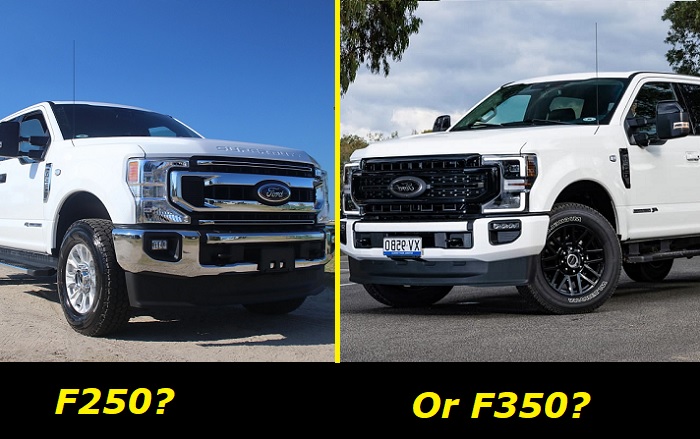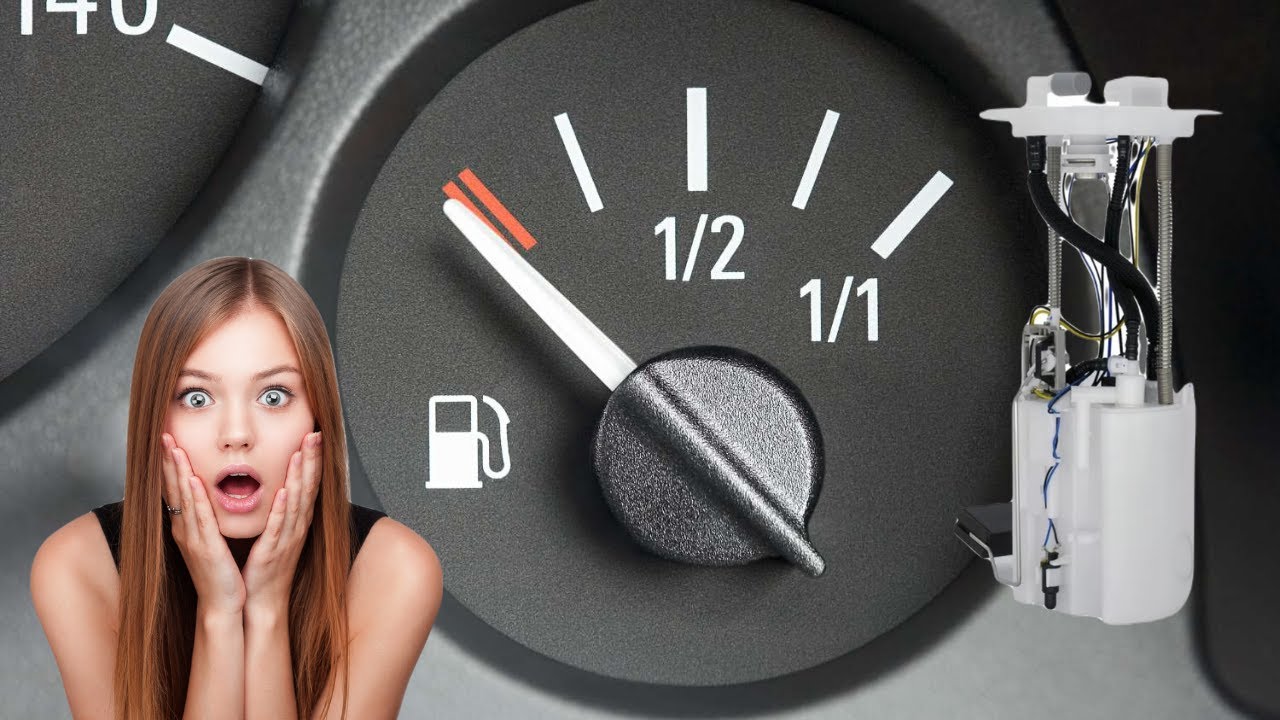The Ford F-Series range brags a long history dating back to 1948. From its introduction until the present day, it remains one of the most popular choices for heavy-duty trucks because of its versatility making it ideal for everyday drives, work, and recreational activities. It also embodies amazing engineering, a powerful engine, and excellent fuel economy.
Among the two important models of the series are the F250 and F350. Both of which offer the best of Ford in the super duty trucks segment of the market. While both are known for their high level of utility, their ride quality is more often than not left out by reviews and people who talk about them.

So, in this article, we will dive into this particular element of the F250 and F350 to determine which one has better driving dynamics and comfort features for its occupants.
Basis of Comparison
To get the best apples-to-apples comparison of the two trucks in terms of ride quality, we have chosen the best trims that they could offer in their 2022 model year without the optional packages as subjects.
The discussion here is divided into the following parts that will serve as our basis for the overall evaluation of the F250 and F350 trucks' ride quality:
- Driving Dynamics
- Seating
- Interior Design
- Infotainment System
- Safety
Driving Dynamics
Let's start this off by looking at the driving dynamics of the F250 and the F350 to see which one offers a more enjoyable experience for the driver. For clarification, this includes the power, steering, ground clearance, and braking of the trucks. The comfort provided by its seat quality shall be tackled separately in the succeeding portion of this part.
- Power
The two are evenly matched when it comes to power because they share the same 6.7-liter turbodiesel V8 engine with OHV and direct injection. It is capable of delivering up to 475 hp at 2,600 rpm and 1,050 lb-ft of torque at 1,600 rpm. All that power goes to all four wheels and is distributed via a 10-speed shiftable automatic transmission system. Both are capable of reaching up to top speeds of 125 mph but their acceleration times from 0 to 60 mph slightly vary due to their differing weights.
According to tests, the lighter F250 with a gross weight of 9,900 lbs. can go 0-60 mph in an estimated time of 6.1 seconds. The heavier F350 weighing 13,000 lbs. has its best time at 6.8 seconds. The split-second change doesn't really do much in improving your sprints but you will somehow feel the weight difference when you are on the driver's seat of each truck. With that kind of power and favorable road conditions though, you are guaranteed to reach your destination in no time.
The driving experience, however, deviates significantly when you are hauling or towing cargo at their respective max capacities. For the record, the F250 has a payload capacity of 3,110 lbs. and a towing capacity of 20,000 lbs. The F350 amps the figures to 5,530 lbs. for the hauling weight and 21,200 lbs. for the towing. This makes a huge difference if you are carrying or pulling equipment during work or your recreational trips. The varying suspension block heights, rear axle center section dimensions, and stiffness on the leaf springs additionally affect the driving dynamics of each model.
- Steering
The two have the same wheelbase measurement at 176 inches and their overall width with the side mirrors is 105.9 inches. Their length is also similar at 266.2 inches. That means their maneuvering should be the same without cargo in tow. Steering is further improved for both models, thanks to the stabilizer bars in their suspension systems.
- Ground Clearance
The F350 is built for more demanding tasks yet its ground clearance is just 8.3 inches compared to the F250's 8.5 inches clearance. The reasoning for this is probably to give it better handling and stability despite its frame. On the end of the spectrum, this also turns towards the advantage of the F250 because that means a little higher fording depth compared to its heavier sibling.
Moreover, the approach and departure angles of the F250 are 17.4 degrees and 20.8 degrees, respectively. The F350 has 17.9 degrees and 20.2 degrees in these aspects. Therefore, the latter has a better climbing advantage but the former has more allowance when going downhill.
Seating
In general, heavy-duty pickups are not exactly known for their seating capacity and comfort features. However, the Ford F250 and F350 have been breaking those barriers by allowing a five-person seating capacity with headrests each. The convenience of the people at the back depends on their sizes though, so maximizing the passenger capacity there may not be advisable if the occupants have bigger statures.
Drivers and passengers alike praise the adjustable and spacious seats of the trucks plus their massage and heating functions. But then again, they mostly complain about the flat surfaces of the seats that don't adapt well to the driver and passenger's bottoms. As an added note, the front leg room of the front seats is 43.9 inches while the people at the back can stretch their legs up to 43.6 inches.
Overall, the driver and passengers may have to contend with the usual inconvenience presented by a pickup that's not carrying any load. Due to its high ground clearance and up to 18-inch wheels, the cabin may be shaky in some instances, especially during bumpy trips, but the suspension designs of the vehicles somehow compensate for this.
The two may not offer the same seating quality as you can find on large SUVs, nonetheless, they do present decent seats for such heavy-duty trucks.
Interior Design
The interior architecture of the F250 and F350 does a pretty great job of insulating the cabin from wind and road noise. The air-conditioning unit of the dual-zone climate control system also works well in keeping the temperature inside within comfortable levels. All the controls are within reach and can be operated without extra effort. Moreover, the windows are wide enough to give nice visibility of the outside of the vehicles.
Infotainment System
Compared to their rivals in the market, both the F250 and F350 showcase a 12-inch touchscreen display embedded with Ford's latest Sync 4 tech. The system offers voice recognition technology for hands-free commands, USB ports, wireless connectivity for smartphones and other smart devices, Apple CarPlay and Android Auto support, and a very reliable satellite-based navigation system. Furthermore, the Bang & Olufsen premium speakers composed of 10 speakers and 1 subwoofer are guaranteed to keep everyone entertained as you play your favorite tunes during the journey.
Safety
Ford vehicles generally stand out for their durability aside from their performance. The F250 and F350 are no stranger to this.
Their top-notch safety features include a blind spot system that notifies the driver when there's an incoming vehicle within range. The maximum range of the sensors can be adjusted up to 33 feet away for more advanced notice to the driver. It also offers a trailer camera to extend the driver's view to the immediate vicinity of the trailer when towing.
Another notable safety element is the tire pressure system that truly comes in very handy when your truck is running below the recommended tire pressure. This can be further incorporated into the trailer for extra safeguard.
In addition, important safety elements can be enjoyed from the advanced driver assistance systems of Ford such as forward collision warning and emergency braking, among others. Speaking of braking, there's a consensus that both the F250 and F350 are sluggish in this department. According to road tests and the actual driving experience of owners, panic stops from a speed of 60 mph yield around 153 feet of distance before going to a complete halt. That span certainly presents a lot of danger for such a heavy-duty truck platform.
Verdict
Based on the data that we compiled, the Ford F250 and F350 mostly share the same benefits and drawbacks when it comes to ride quality making it almost a tie between the two. That's because they are almost similar in features, particularly in performance, seating, interior design, infotainment system, and safety. There's just a little window to make a substantial comparison between the two.
In the end, it all depends on your purpose of owning a heavy-duty pickup if it is for casual everyday drives, work, or recreational activities as the few factors needed to determine the ride quality of each only differ slightly to the point that they do not significantly contribute to a sound consensus to resolve the matter.
When it comes to regular and more demanding recreational and work-related activities though, you are sure to get your money's worth when investing in an F350 because it offers more towing capacity and its ride quality is built to handle such rigorous activities. Meanwhile, if you are simply looking for a truck that's built for everyday drives with a dandy capacity for hauling or towing heavy loads occasionally, the F250 presents a better alternative as it lets you shave off a few thousand bucks from your investment while getting the same ride quality as the F350.
About the authors
The CarAraC research team is composed of seasoned auto mechanics and automotive industry professionals, including individuals with advanced degrees and certifications in their field. Our team members boast prestigious credentials, reflecting their extensive knowledge and skills. These qualifications include: IMI: Institute of the Motor Industry, ASE-Certified Master Automobile Technicians; Coventry University, Graduate of MA in Automotive Journalism; Politecnico di Torino, Italy, MS Automotive Engineering; Ss. Cyril and Methodius University in Skopje, Mechanical University in Skopje; TOC Automotive College; DHA Suffa University, Department of Mechanical Engineering






Add comment